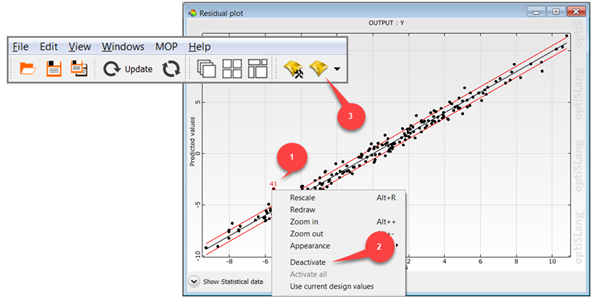This tutorial allows you to complete a sensitivity analysis of the following analytical nonlinear function:

The function has additive linear and nonlinear terms and one coupling term.
Contribution to the output variance (reference values):
X1: 18.0%
X2: 30.6%
X3: 64.3%
X4: 0.7%
X5: 0.2%
This tutorial demonstrates how to do the following:
Generate a solver chain using text parametrization and solver call by Windows script
Define the parameters and responses
Specify parameter properties
Define the Design of Experiment (DOE) scheme
Perform a sensitivity analysis including Metamodel of Optimal Prognosis (MOP)
Extend the data base by the adaptive MOP
Remove outliers and rebuild the MOP
Before you start the tutorial, download the coupled_function_sensitivity zip file from here , and extract it to your working directory.
To set up and run the tutorial, perform the following steps:
- Creating a New Project
- Starting the Solver Wizard
- Selecting the Input File
- Defining the Input Parameters
- Editing the Parameter Properties
- Selecting the Output File
- Defining the Response
- Defining the Optimization Criteria
- Importing the Solver Call File
- Creating the Solver Chain Template
- Saving and Running the Project
- Completing the Sensitivity Wizard
- Running the Sensitivity Analysis
- Viewing the MOP Results
- Adding an Adaptive Metamodel of Optimal Prognosis System
- Configuring AMOP Settings
- Running the Project and Viewing AMOP Postprocessing
- Deactivating Outliers
From the Wizards pane, drag the Solver wizard to the Scenery pane and let it drop.
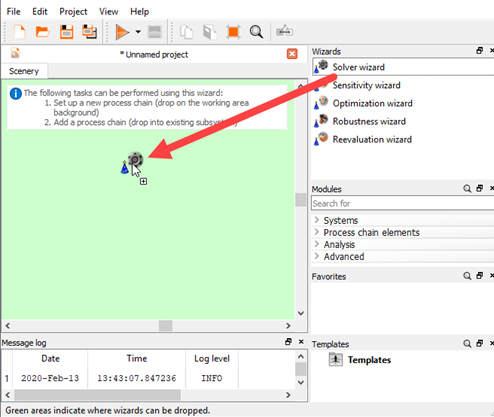
From the solver list, click .
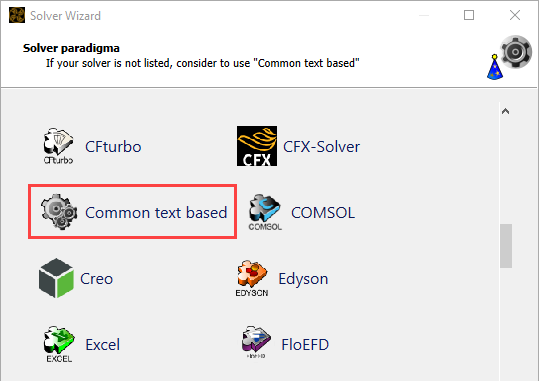
In the Select input file dialog box, browse to the coupled_function_sensitivity folder and select coupled_function.s.
Click .
In the text editor, highlight lines 20-24.
Click .
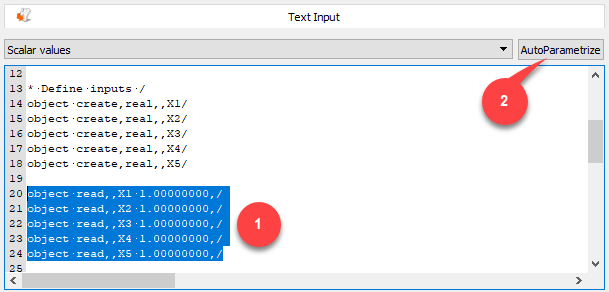
All possible values are marked.
Change the base parameter name to
X%01d.
Parameter names are automatically defined (the first being X1 and so on).
To move to the first value, click
 .
.To register the parameter, click Add.
Repeat this procedure for parameters X2 to X5.
Click .
To highlight all of the parameters in the table, do one of the following:
Click the name of the first parameter, press Shift, and then click the name of the parameter the last row.
Click the name of the first parameter, then with the mouse key pressed, pull down to the last parameter and release the mouse key.
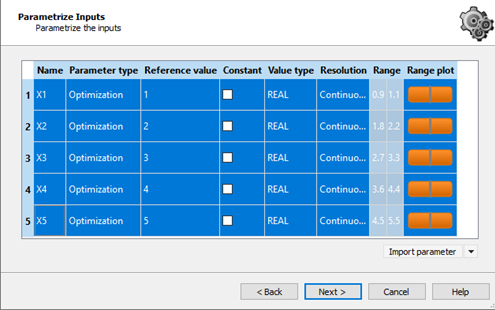
While still pressing the Shift key, double-click the range numbers in row 5.

Change the lower bound to
-3.14and the upper bound to3.14.Press Enter.
The range of all of the parameters changes to -3.14 and 3.14.
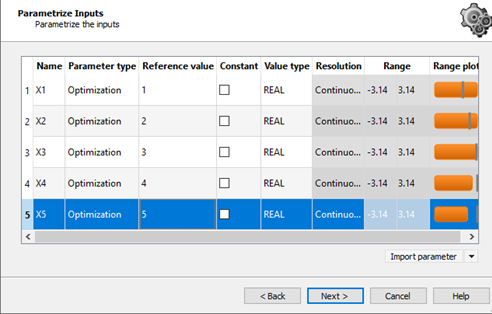
Click .
In the Choose a file to open dialog box, browse to the coupled_function_sensitivity folder and select coupled_solution.txt.
Click .
From the File format list, ensure is selected and click .
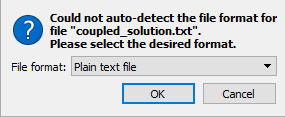
Highlight the response value.
In the Variable Name field, type
Y.To register the value as a response, click .

Click .
Do not adjust or add to the currently displayed values for parameters, responses, and criteria.
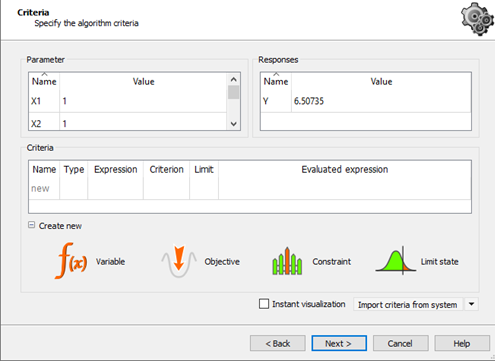
Click .
To the right of the Absolute path field, click the orange folder.

Browse to the coupled_function_sensitivity folder and select coupled_function.bat for Windows systems or coupled_function.sh for Linux systems.
Click Open.
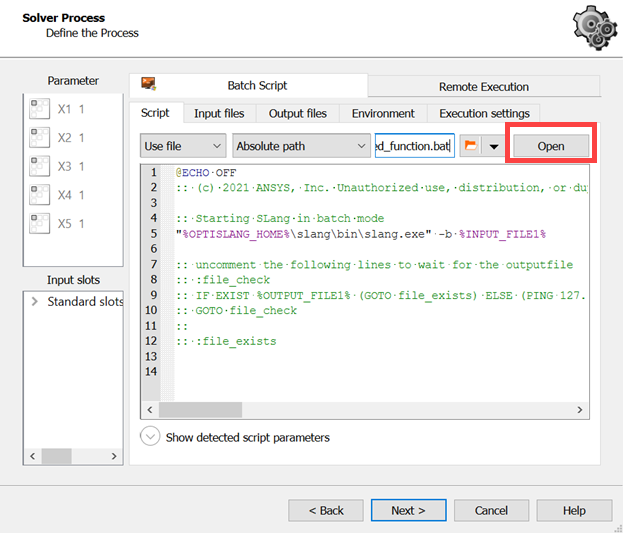
Click .
Select the Create a template from solver chain check box.
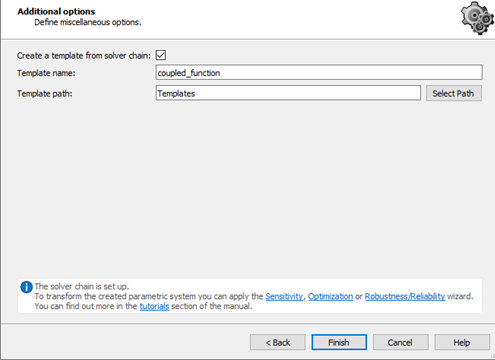
Click .
The template is displayed in the Templates pane and the system is added to the Scenery pane.
To save the project, click
 .
.Browse to the location to save the project and type a project name in the File name field.
Click .
To run the project, click
 .
.To review the result, double-click the coupled function system and switch to the Result designs tab.

From the Wizards pane, drag the Sensitivity wizard to the head of the solver chain and let it drop.

Do not adjust the values in the Parametrize Inputs table.
Click .
Do not adjust or add to the currently displayed values for parameters, responses, and criteria.
Click .
Select the Space filling Latin Hypercube Sampling method.

Click .
Do not adjust the current postprocessing settings.
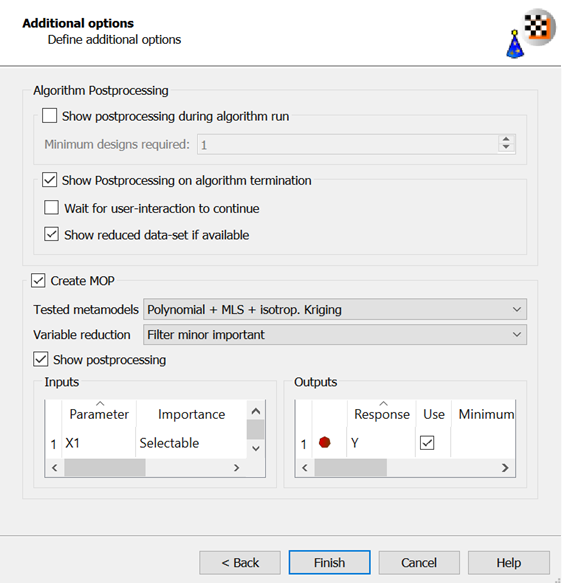
Click .
The sensitivity workflow is displayed on the Scenery pane.

To save the project, click
 .
.To start the sensitivity analysis, click
 .
.The bar on top of the sensitivity system displays the progress of the analysis. The message log displays the sequence of events.
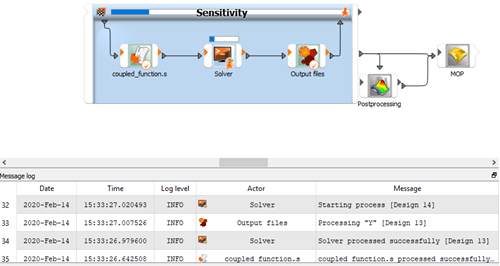
If the MOP results are not automatically displayed, right-click the MOP node and select from the context menu.

The results show a 3D-subspace-plot of the approximation function depending on the two most important parameters X2and X3.

The approximation quality in terms of the Coefficient of Prognosis is shown together with the variance contribution of the single variables and indicates, that only X1, X2, and X3are important in this example.
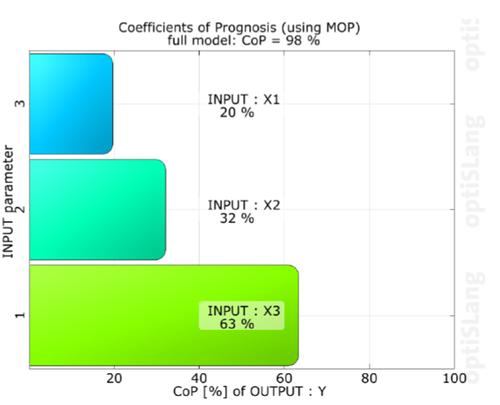
To increase the data set, drag and drop the Sensitivity wizard onto the head of the Sensitivity system.

Leave the sampling method settings at the default and click .
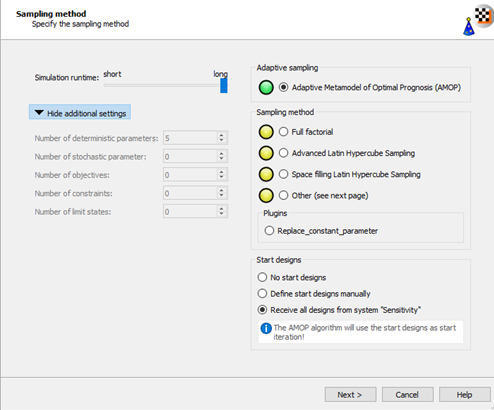
Leave the additional optional settings at the default and click .
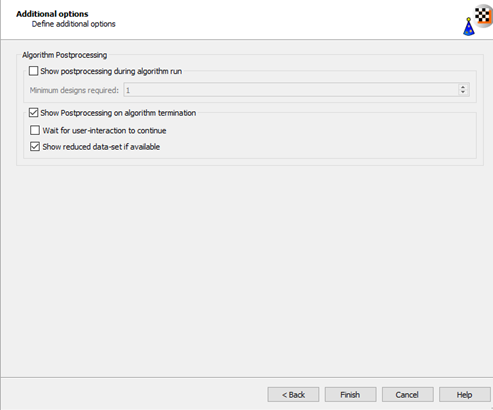
An AMOP system is displayed on the Scenery pane.

The designs of the first sensitivity system are automatically considered as start designs for the following AMOP using a slot connection.
Double-click the AMOP system to open the settings.
On the Adaption tab, select the check box.
In the Target CoP field, enter
0.99(set target to 99%).
To save and close the settings, click .
To save the project, click
 .
.To run the project, click
 .
.The AMOP postprocessing is displayed. You can observe:
The Coefficient of Prognosis was increased to 99% in 3 iterations
The influence of the individual parameters was changed slightly
The AMOP stopped by reaching the maximum number of iterations
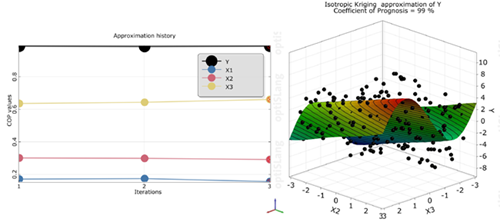
The residual plot shows the predicted values (from cross validation) versus the original data values by indicating lower and upper error bounds. Error bounds are obtained from the standard deviation of the error values multiplied with the user defined sigma level. Samples outside the error bounds may be possible outliers.
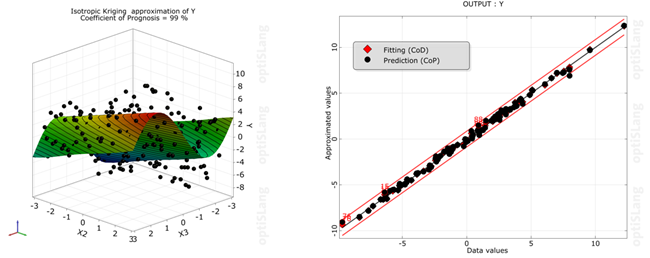
To deactivate outliers:
Select outliers in the residual plot.
Right-click and select from the context menu.
To update the MOP directly in the postprocessing, click
 .
.